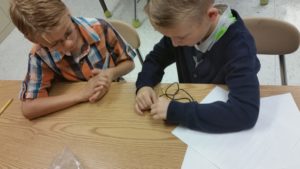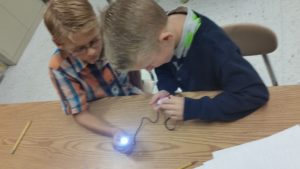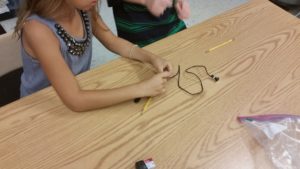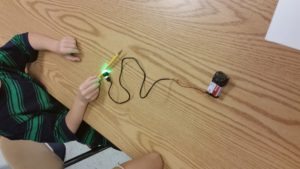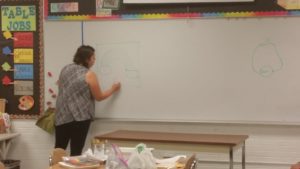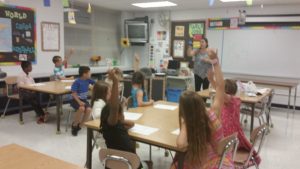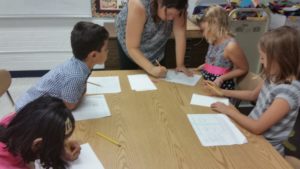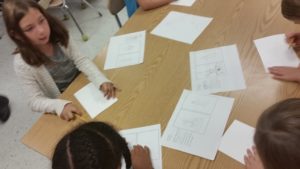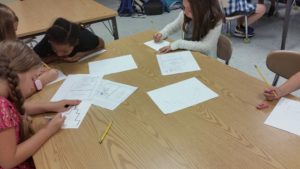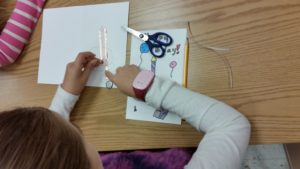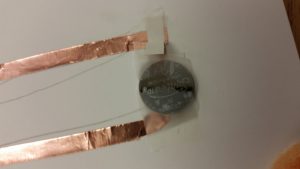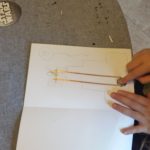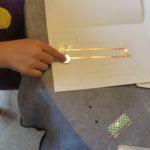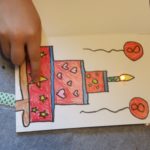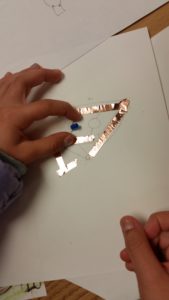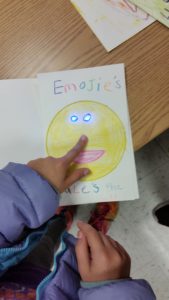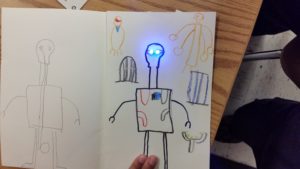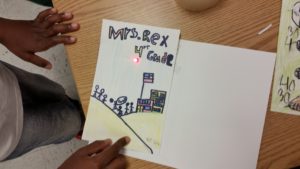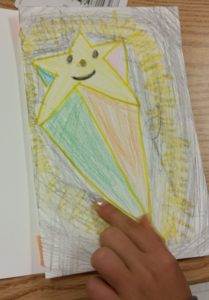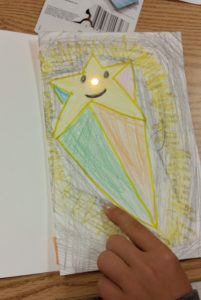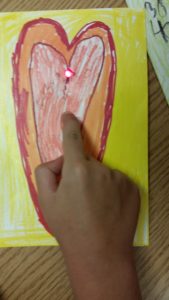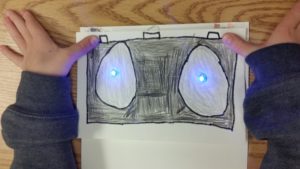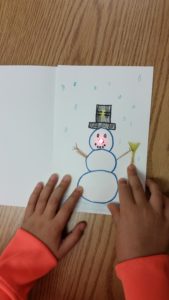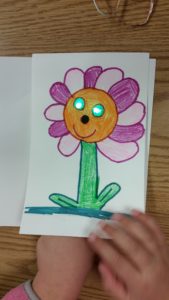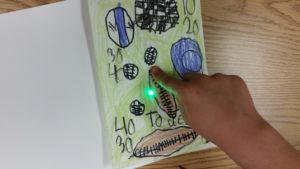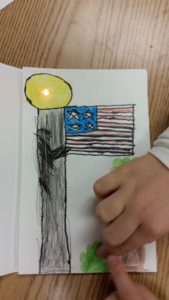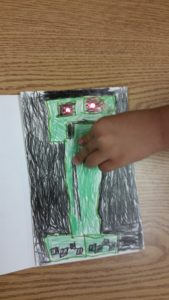LED greeting cards was the first unit The Rubber Band Project did with the Emerson STEAM club in the 16-17 School year. Our first session 9.7.16 focused on an introduction to STEAM club, a review of rules, a quick introduction to how circuits work, we practiced making a simple circuit with a light and a battery, and then began work planning for our LED greeting cards. Our second session 9.21.16 continued work on our greeting cards. Students finished their plans, and began creating their greeting cards. During our third session (10.5.16) many students updated their circuit with copper tape, LED light, and a watch battery. We ran into some issues, some technical, some not. Students had to make sure their circuits were complete. Students had to make sure their positive and negative leads on LED’s did not get flipped ( stopping the circuit.) Students had to be careful to not use to much clear tape on the battery and stop a complete circuit from forming. It was a great example of learning about the iterative design process. We also learned that making a led card light up 100% of the time is difficult. We talked about how LED cards you buy in the store tend to be expensive, and must have a lot of engineering behind them. Underneath all of the pictures is a list of standards this unit covered.
CCSS.ELA-LITERACY.RST.6-8.3: Follow precisely a multistep procedure when carrying out experiments, taking measurements, or performing technical tasks.CCSS.ELA-LITERACY.RST.9-10.8: Assess the extent to which the reasoning and evidence in a text support the author’s claim or a recommendation for solving a scientific or technical problem.MS-ETS1-1: Define the criteria and constraints of a design problem with sufficient precision to ensure a successful solution, taking into account relevant scientific principles and potential impacts on people and the natural environment that may limit possible solutions.
MS-ETS1-2: Evaluate competing design solutions using a systematic process to determine how well they meet the criteria and constraints of the problem.
HS-PS3-3: Design, build, and refine a device that works within given constraints to convert one form of energy into another form of energy.
(VA:Cr1.1.4a) Brainstorm multiple approaches to a creative art or design problem.
